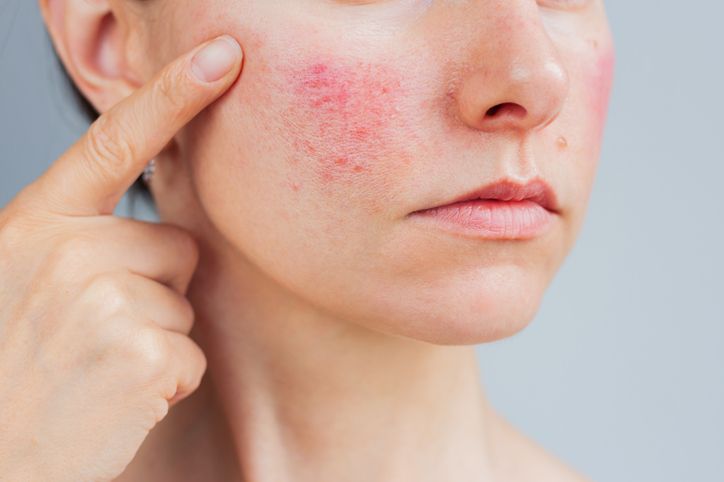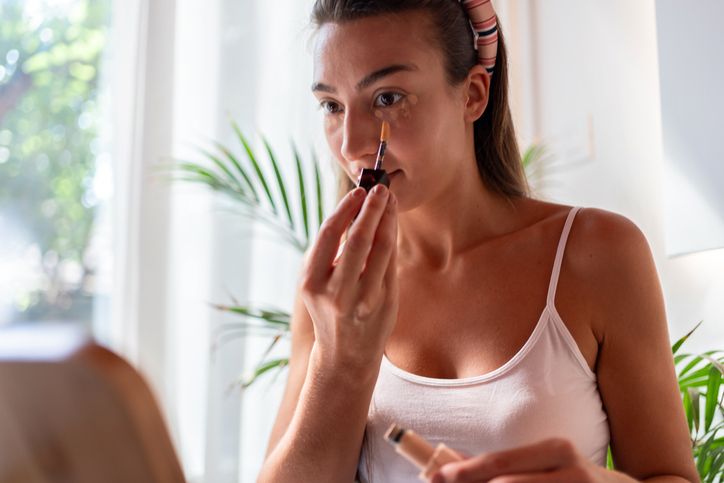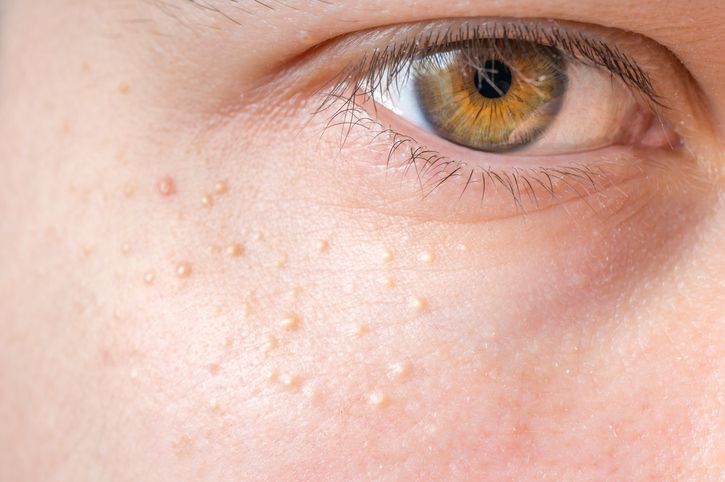- Home
- Trend
- Weight Loss Strategies
- Acne Tips
- Hair Health Information
- Blemish Removal Tips
- Acne Scar Removal Tips
- Muscle Building Techniques
- Intimate Care Tips
- Postpartum Intimate Care
- Eye Bags Wiki
- Tips for Face Slimming
- Secret of Permanent Hair Removal
- Breast Enlargement Tips
- Cure to Snoring
- Marionette Lines
- Skin-Tightening Secrets
After entering the workforce, many people start facing a new concern—hair loss. As we age, this problem can become more pronounced. However, many individuals overlook the early signs and only start paying attention once their hair noticeably thins or bald patches emerge. By then, it may be too late. To prevent long-term damage, it’s crucial to take action during the early stages of hair loss. But how can you tell if you're in the early phase of hair loss? And what should you do about it? This article will guide you through the symptoms, causes, and best solutions to tackle hair loss early—before it gets worse.
Why Do People Lose Hair? 3 Ways to Identify Early-Stage Hair Loss

Hair shedding is a normal physiological process, and early-stage hair loss also manifests as hair shedding. This makes it difficult to detect hair loss in the early stages and often delays timely treatment.
Normal Hair Shedding
Hair grows from follicles embedded in the scalp, and these follicles don’t produce hair indefinitely. Instead, hair grows in a cycle: the growth phase, the resting phase, and the shedding phase. Even healthy hair goes through this cycle.
The human body has over 5 million hair follicles, with 100,000 to 150,000 located on the scalp. Each follicular unit typically contains 2–4 follicles, and each follicle produces one strand of hair. On average, a person has about 100,000 to 150,000 strands of hair.
Roughly 84% of these hairs are in the growth phase, 14% are in the resting phase, and just 2% are in the shedding phase. With around 100,000 hairs on your head, losing 50–70 hairs a day is completely normal. These are naturally replaced by new growth and do not indicate a problem.
Hair Loss (Alopecia)
Hair loss, in contrast, is an abnormal condition. It occurs when follicles are damaged or weakened by hormones or external factors, rendering them unable to support hair growth.
Unlike normal hair shedding, hair loss involves significantly more follicles entering a dormant state or dying. You might notice your new hair becoming finer or thinner, and more prone to falling out. Eventually, the follicles may become permanently inactive, making regrowth difficult without medical intervention.
Key Differences Between Hair Shedding and Hair Loss
Natural hair shedding is part of the normal cycle. The fallen hair will grow back once the follicle reenters the growth phase. On the other hand, hair loss is pathological—when external triggers like hormonal imbalance or trauma cause follicle shrinkage, hair falls out and doesn’t grow back easily, often requiring medical intervention.
3 Ways to Tell If You’re Experiencing Hair Loss or Just Normal Shedding:
1. Has Your Overall Hair Volume Decreased?
Hair loss leads to visibly thinning hair or bald patches. Take periodic photos to compare hair volume over time. Early-stage hair loss often starts with thinning at the hairline, temples, or crown. While these signs are easy to spot in later stages, they’re less obvious early on.
2. How Much Hair Are You Losing Daily?
As mentioned, losing 50–70 hairs per day is normal. In hair loss, that number jumps—up to 200–300 hairs a day. This is especially pronounced in conditions like alopecia areata. Keeping track of how much hair you shed during washing or brushing can be a good indicator.
3. What Does Fallen Hair Look Like?
Normal hair strands are usually uniform in thickness and appear as if cut cleanly at the root. In contrast, hair from hair loss is often thin and weak, with uneven thickness and white bulb-like substances attached to the root—signs that the follicle is under stress or deteriorating.
These three clues can help you identify early-stage hair loss. It’s worth noting that symptoms differ between men and women. For example, men often show a receding M-shaped hairline, while women typically experience thinning at the crown or a widened part. For accurate diagnosis and advice, it’s best to consult a doctor.
Are Men More Likely to Go Bald? Key Differences in Male vs. Female Hair Loss

Hair loss is more prevalent among men than women, and the reasons go deeper than lifestyle or stress. Biological factors—especially hormones—play a crucial role.
Male Pattern Baldness and DHT
Male pattern hair loss (androgenetic alopecia), previously known as oily scalp hair loss, is driven by male hormones. Testosterone is converted into DHT (dihydrotestosterone) by the enzyme 5-alpha reductase in hair follicles. DHT then binds to receptors in follicle cells, shortening the hair growth cycle and leading to thinner, weaker hair that falls out more easily.
Hair follicles in specific areas—such as the temples, crown, and top of the head—are more sensitive to DHT, which is why these are often the first areas to show balding.
Why Women Are Less Affected
Women produce less testosterone, and the presence of estrogen helps counteract the effects of DHT. However, this doesn’t mean women are immune to hair loss. Female hair loss can be caused by:
• Hormonal changes (e.g., postpartum estrogen drop)
• Alopecia areata (an autoimmune condition causing patchy hair loss)
• Crash dieting (leading to nutrient deficiency)
• Endocrine disorders (e.g., thyroid imbalances)
• Chronic stress
Postpartum hair loss typically improves within 6 months. Other causes like thyroid issues or poor diet may require medical attention.
免費體驗
F8 Hair Regrowth Treatment
1 Minute Self-Registration
Date should not be before minimal date
Catch Hair Loss Early—Doctors Warn: It Can Worsen Within 5 Years!
Don’t think of hair loss as a midlife problem. Increasingly, people in their 20s—especially students and office workers—are developing early signs like receding hairlines. Some try to “fix” it by switching shampoos or reducing styling product use. But these measures are often superficial and don’t address the root problem.
Dr. Lam, a local dermatologist, warns that from the first signs of hair loss, the condition can progress significantly within just 5 years. Once follicles become too damaged, regrowth may no longer be possible. The optimal treatment window for male pattern hair loss is between stages 2 and 3, but earlier intervention yields better outcomes.
Dr. Lam emphasizes that early treatment—especially while young—enhances medication efficacy. It can reverse follicle shrinkage, extend the growth phase, and prevent future hair loss more effectively.
His advice: take early signs seriously, act promptly, and choose the right solution before it's too late.
Early-Stage Hair Loss Solutions: Treat the Root Cause with a Comprehensive Approach
It's common for people to misuse hair loss treatments. Dr. Lam often encounters patients who have tried ineffective remedies—such as topical products with herbal ingredients intended to prevent hair loss—which end up causing scalp sensitivity and itching. These products often lack medical evidence, and their effectiveness is questionable. In some cases, they may even worsen the condition by accelerating the hair follicles' entry into the resting phase.
To address early-stage hair loss effectively, Dr. Lam recommends a comprehensive treatment that includes both topical and oral options. These include Minoxidil hair regrowth solution and Finasteride oral medication, both recognized by leading international medical authorities.
“For topical use, I suggest patients apply a Minoxidil-based solution. For oral treatment, I prescribe medication that contains Finasteride. When used together, they produce a synergistic effect that significantly improves treatment outcomes,” Dr. Lam explains.
Clinical studies have confirmed that Minoxidil can stimulate hair regrowth within 16 weeks, and 80% of users experience stabilization of hair loss. Dr. Lam adds, “Minoxidil is suitable for both men and women and does not require a doctor’s prescription—it can be purchased under a pharmacist’s guidance. Finasteride, on the other hand, is only suitable for men and must be prescribed by a doctor and dispensed under pharmacist supervision.”
Based on his experience treating hair loss patients, Dr. Lam emphasizes that many people waste time and money using the wrong treatments, missing the optimal window for intervention and ultimately affecting the success of future treatments. This is something everyone should be mindful of.
Highly Safe and Fast-Acting Hair Regrowth Treatment: Perfect Medical’s F8 Hair Regrowth Treatment
In addition to the two prescription options above, low-level laser therapy (LLLT) is another effective solution for people experiencing hair loss. This treatment is also approved by reputable international medical authorities, ensuring its safety. Its efficacy is widely acknowledged, with the ability to quickly prevent further hair loss and significantly promote hair regrowth.
Among the many options available, we highly recommend Perfect Medical’s F8 Hair Regrowth Treatment.
This treatment uses non-invasive laser technology to ensure a painless, non-surgical process, making it suitable for early-, mid-, and late-stage hair loss patients. It does not involve injections or oral medications, carries no side effects, and requires no recovery time—making it an ideal choice for urban dwellers seeking a convenient solution.
The therapy delivers low-level laser energy directly to the root of the hair follicles, improving scalp blood circulation and activating the capillaries. This helps nourish the scalp and hair, creating an optimal environment for strong and healthy hair growth. At the same time, the treatment addresses hair loss at the root, solving issues such as receding hairlines, thinning at the crown, sparse hair, M-shaped hairlines, bald spots, and androgenetic alopecia.
Whether for stopping hair loss, revitalizing follicles, or stimulating new hair growth, Perfect Medical’s F8 Hair Regrowth Treatment delivers exceptional results—making it a top choice for those in the early stages of hair loss. What’s more, Perfect Medical is now offering a free trial session for first-time users. Just click the link below to register and book your appointment—you won’t want to miss this opportunity!
Experience Now: Perfect Medical F8 Hair Regrowth Treatment免費體驗
F8 Hair Regrowth Treatment
1 Minute Self-Registration
Date should not be before minimal date
FAQ

How does the number of hairs lost differ across early-, mid-, and late-stage hair loss?
According to medical standards, it’s normal to lose 50–70 strands of hair per day. Losing 70–100 hairs daily is considered early-stage hair loss, while 100–120 strands signify mid-stage hair loss. Anything above 120 strands per day is classified as severe, or late-stage, hair loss.
Are treatment approaches different for early-stage vs. late-stage hair loss?
Yes. If you are already experiencing significant hair loss or visible bald spots, early-stage treatments may no longer be effective. Late-stage hair loss is often compared to the “cancer” of hair loss, where medications have limited effectiveness. In such cases, hair transplant surgery is often the only option that yields satisfactory results. Hair transplantation involves harvesting healthy hair follicles from the back of the head—where hair is more resistant to hormonal changes—and implanting them into balding areas. Since follicles in bald areas are often damaged and cannot regenerate, transplanting healthy ones can effectively restore hair. The success of the surgery depends on both the number of follicles extracted and the surgeon’s skill. Once transplanted and established, these follicles typically do not fall out again, making hair transplant the ultimate solution to advanced hair loss.
What natural remedies can help slow down early-stage hair loss?
Several natural methods may help slow down hair loss at the early stage: Healthy Diet: Ensure adequate intake of vitamins, minerals, and proteins—especially vitamins B, C, D, and E, which are essential for hair growth. Scalp Massage: Increases blood circulation and helps hair follicles absorb more nutrients. Herbal Hair Care: Use natural herbs like lavender, rosemary, and aloe vera in shampoos or scalp treatments. Healthy Lifestyle: Reduce stress, get enough sleep, and exercise moderately to support hair health. Avoid Overstyling: Limit use of heated styling tools, reduce hair dye frequency, and avoid tight hairstyles. Scalp Hygiene: Keep the scalp clean to prevent dandruff and excess oil, which can aggravate hair loss. Note that the effectiveness of these natural remedies can vary by individual. If your hair loss becomes severe or persistent, it’s best to consult a medical professional for a detailed diagnosis and treatment plan.
Can early-stage hair loss reverse on its own?
That depends on the cause. In some cases—such as when hair loss results from temporary stress, illness, or medication side effects—hair may regrow naturally once the trigger is removed. For example, if a medication temporarily causes hair loss, stopping it might restore normal hair growth. Similarly, hair loss caused by illness or stress might resolve once those factors are addressed. However, in cases of genetic hair loss or hair loss due to long-term unhealthy habits, the condition typically does not reverse on its own. Androgenetic alopecia (hereditary hair loss), in particular, tends to progress and rarely improves without intervention. In such cases, active treatment is usually necessary.
Which foods or nutrients help slow down early-stage hair loss?
Nutrition plays a crucial role in hair health. A balanced diet rich in vitamins and minerals can help slow hair loss. Key nutrients include: Vitamin D, Iron, Zinc, Biotin (Vitamin B7), Protein, and Omega-3 fatty acids. Including these in your diet can support healthy hair growth and reduce the rate of hair shedding.









